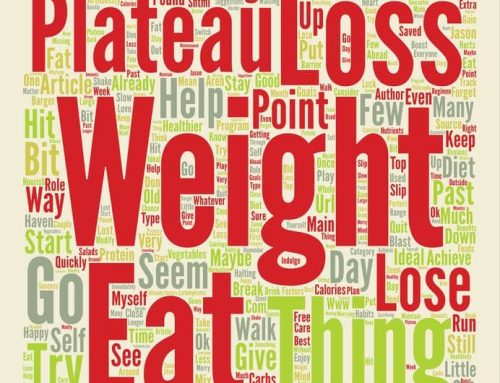What are the side effects of weight loss drugs? This review links 3 potentially-blinding eye conditions to GLP-1 drugs like Ozempic.
Scientists have found a link between certain eye conditions and GLP-1 medications.
• Past studies have found a potential link between semaglutide and the eye condition called nonarteritic anterior ischemic optic neuropathy (NAION).
• A recently-published investigatory review reports nine people taking semaglutide and tirzepatide experienced vision issues.
• The three potentially blinding eye conditions included NAION, papillitis, and paracentral acute middle maculopathy.
As interest in taking glucagon-like peptide-1 receptor agonist (GLP-1 agonist) medications, such as Zepbound and Wegovy, for weight loss, research continues to examine potential new side effects of these types of drugs.
In July 2024, a study published in the journal JAMA Ophthalmology found a potential link between semaglutide— the active ingredient in Wegovy and Ozempic — and a rare eye condition called nonarteritic anterior ischemic optic neuropathy (NAION).
Now, a new investigatory review just published in JAMA Ophthalmology reports nine people taking semaglutide and tirzepatide— the active ingredient in Zepbound and Mounjaro — experienced vision issues, including NAION, as well as two other potentially blinding eye conditions.
Side Effects of Weight Loss Drugs
According to Bradley Katz, MD, PhD, an ophthalmologist at the John A. Moran Eye Center and professor in the Department of Ophthalmology & Visual Sciences at the University of Utah and lead author of this study, it’s important for researchers to continue to examine how GLP-1 medications might impact other areas of a person’s health.
“Between 2-3% of the U.S. population received a prescription for one of these medications in 2023,” Katz told Medical News Today. “Because so many people are using these medications it’s critical to monitor any ill effects on the eye or other parts of the body.”
• For this investigative study, Katz and his team focused on nine patients with an average age of about 58, with five females and four males.
• Seven of the study participants developed NAION, which Katz explained is a stroke of the optic nerve — the nerve that connects your eye to your brain — potentially causing irreversible vision loss in one or both eyes.
• “One (participant) developed a stroke in the retina — this is the part of your eye that absorbs light and turns it into an electrical signal for your brain,” he continued. “This stroke also causes irreversible loss of vision in one eye.”
• “The ninth patient developed swelling in both optic nerves but did not lose vision,” Katz added.
Rapid blood sugar changes may be behind eye issues
While it is still unclear as to what may cause a person taking a GLP-1 medication to experience an eye issue, researchers hypothesize that rapid changes in blood sugar levels might contribute to these eye complications.
“These drugs are very effective at reducing blood sugar and when one rapidly reduces blood sugar it can cause swelling in the optic nerve,” Katz explained.
“It can also temporarily worsen diabetic eye changes. How it causes swelling is thought to be due an osmotic shift. When there’s more ‘stuff’ in your blood — in this case sugar — and you suddenly reduce the amount of stuff in the blood, it causes rapid shifts in fluid between blood vessels and cells in the eye,” he said.
Katz also stated that they are not recommending anyone stop using GLP-1 drugs or not use these drugs if they’re recommended by their doctor.
“What we are recommending is that if you experience a change in your vision while using one of these drugs, you should consult the prescribing doctor and see an ophthalmologist. We are also recommending that if patients are starting these drugs or increasing the dose of these drugs, they should do so slowly to reduce the risk of dropping their blood sugar and causing an osmotic shift.”
— Bradley Katz, MD, PhD
“We as well as other concerned physicians are also asking FDA to mandate a post-marketing survey of these drugs to find the true incidence of eye complications associated with them. We are in discussions with other groups around the U.S. who want to do a more comprehensive review of these medications and potential ocular side effects,” Katz added.
Important to be aware of GLP-1 potential side effects
MNT had the opportunity to speak with Mir Ali, MD, a board certified general surgeon, bariatric surgeon, and medical director of MemorialCare Surgical Weight Loss Center at Orange Coast Medical Center in Fountain Valley, CA, about this study.
“This seems to be a rare and unusual complication of GLP-1 medication use, as millions of people have been using these types of medications for many years,” Ali commented. “Since this is so rare a complication, in so few patients, it is difficult to delineate the exact mechanism; I really can’t comment on why this would happen.”
“As with all medications, if a patient notices a significant change in vision, or any other system, they should contact their prescribing provider. Since there is widespread use of these medications, it is important for people to be aware of all potential side effects and complications. However, since eye problems are very rare, it probably would not impact the frequency people on these medications should have their eyes examined.”
— Mir Ali, MD
“As with all research, finding a greater sample of people affected by these conditions using GLP-1 medications may help to identify risk factors for these types of problems,” Ali added. ”If a risk factor for eye problems is identified, and someone has these factors, then it may be a reason for a person to avoid these medications.”
As a certified nutritionist who coaches clients in Irvine and all of Orange County, My feeling is that these drugs can be helpful but need to be paired with a healthy meal plan, including sufficient fiber. Need help? Please reach out.
Click here to read more about side effects of weight loss drugs.






